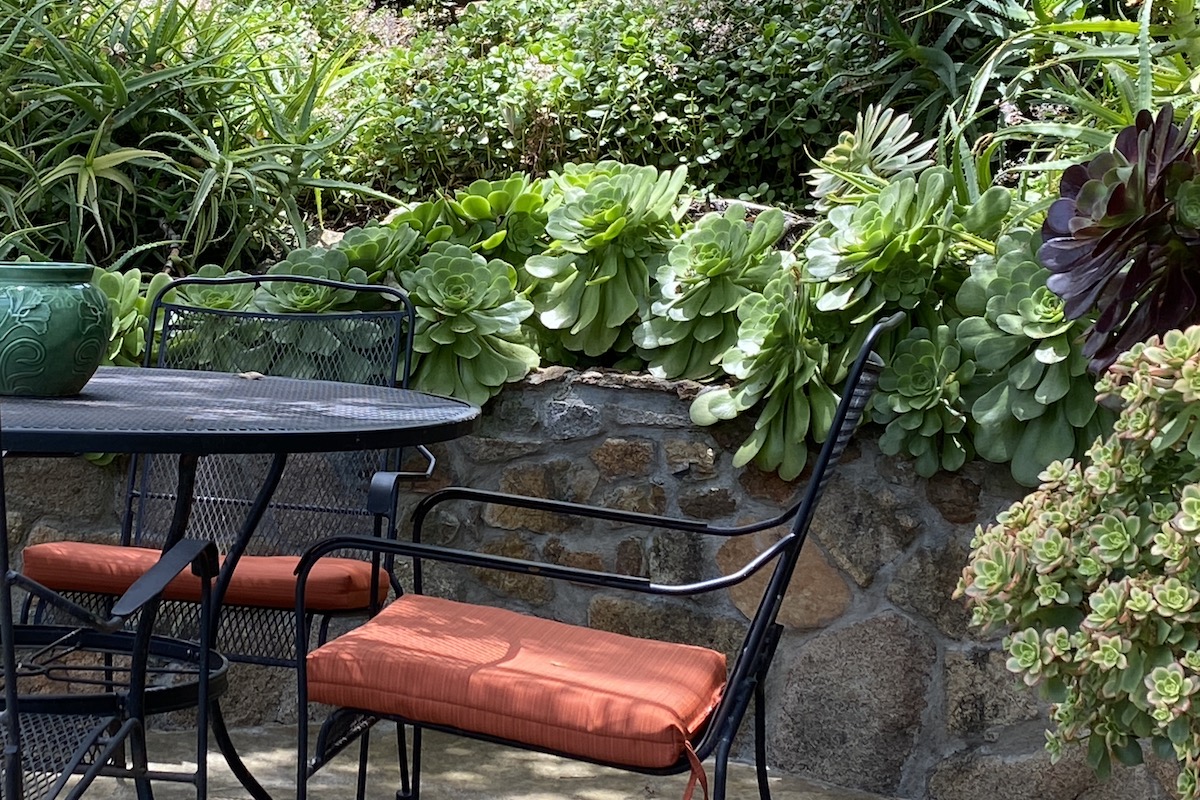
Should You Water Aeoniums in Summer?
Above: Aeoniums thrive in dappled shade in my garden. Center: A. urbicum. In back: A. 'Sunburst'. Far right: dark A. 'Zwartkop' and below it, A. 'Kiwi'. Variegates can be susceptible to sunburn. Darker aeoniums fare best; more pigment = better sun protection. Learn more on my Aeonium page.
It seems counterintuitive, but...
When you should do something
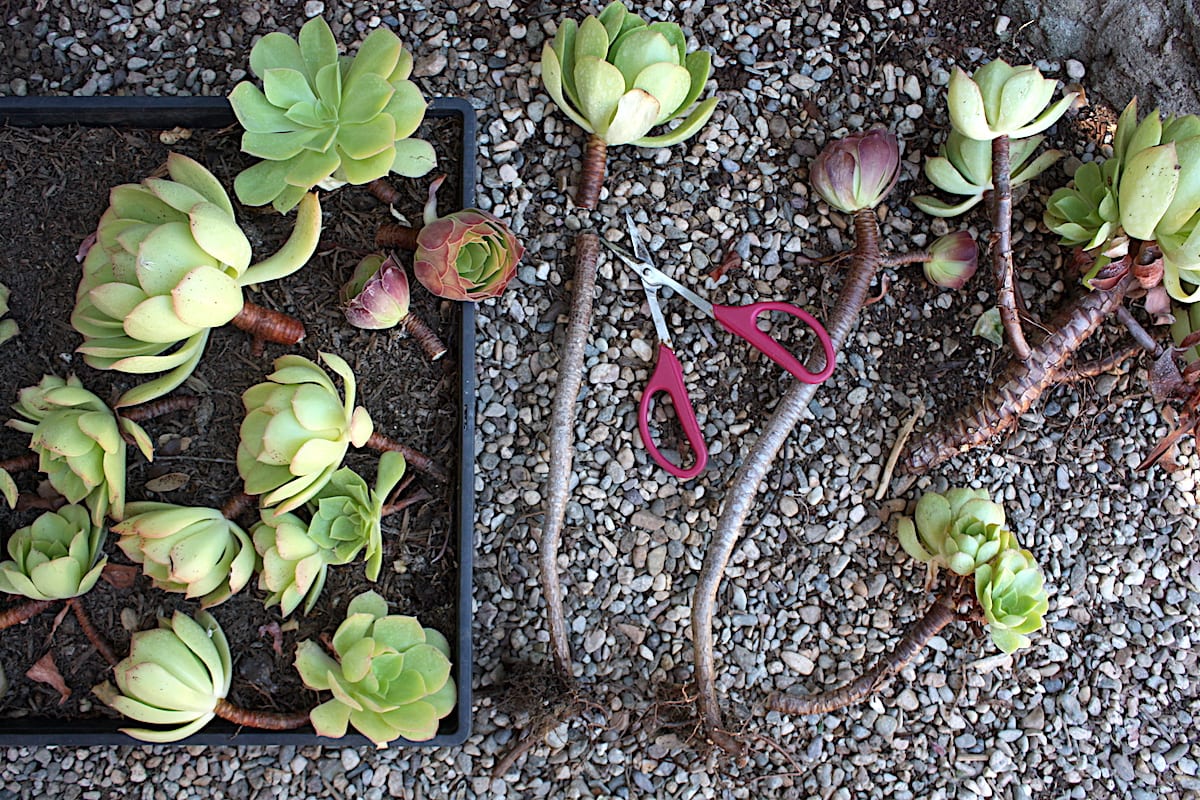
Did you lose your aeoniums to rot? Need to refresh existing specimens? See how to take cuttings from firm, healthy top growth and start them in my video "How to Plant or Redo an Overgrown Succulent Garden."
What does kill aeoniums
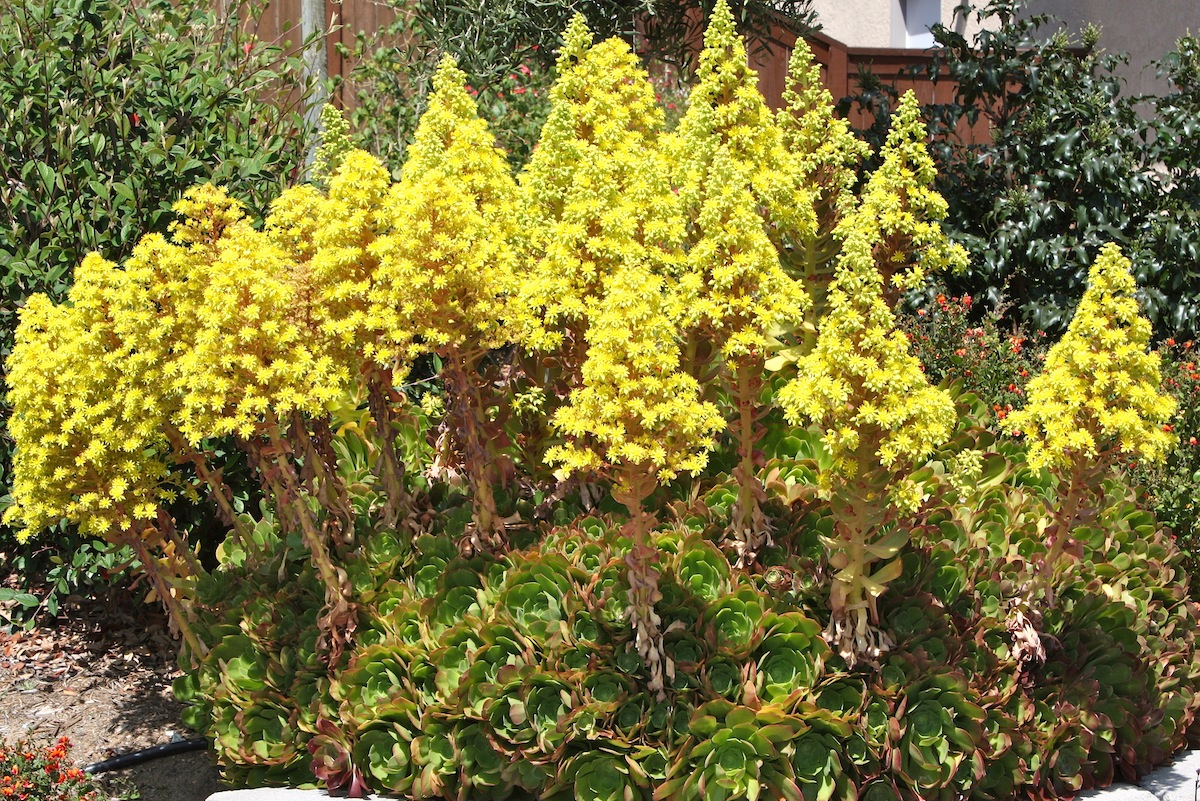
Not all rosettes in a colony bloom at once, and it takes years for most aeonium rosettes to flower. Enjoy the show, then cut the stalks where they join the trunk.
True, aeoniums that get no water look like they're at death’s door by September…which is when my neighbors’ gardener yanks theirs. Oh, if he'd only wait! Aeoniums that appear moribund will bounce back in a few months!
The bottom line
But how to tell if an aeonium is dormant?

My Aeonium haworthii in September, after six months with no water.
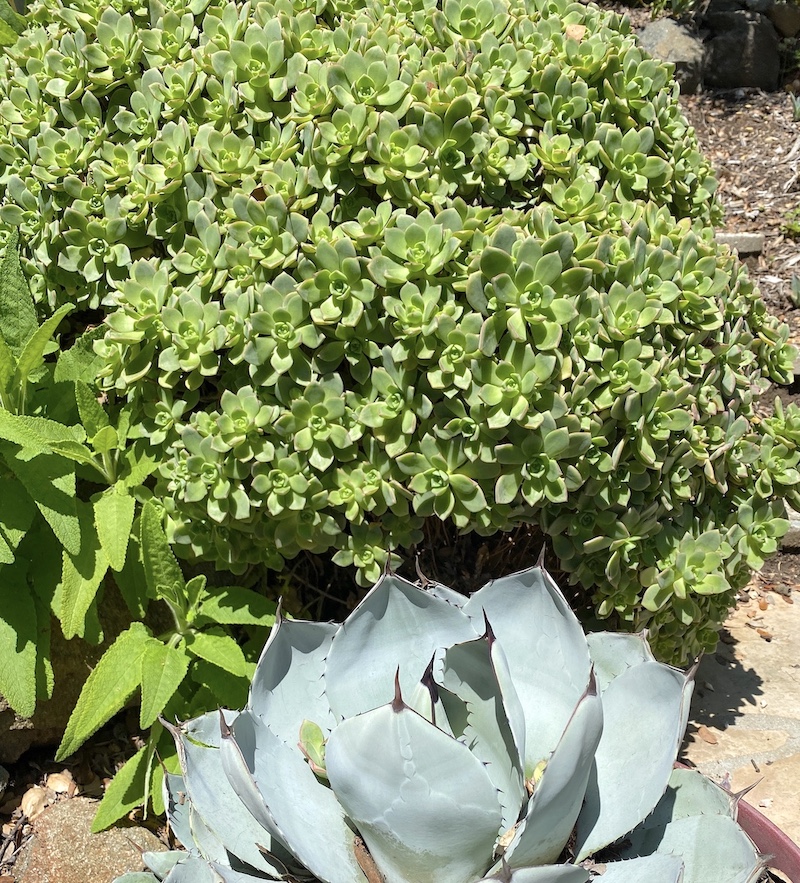
The same aeonium in the spring, after winter storms. This drought-then-flourish cycle happens every year, and the plant keeps getting bigger.
What if you do water them?
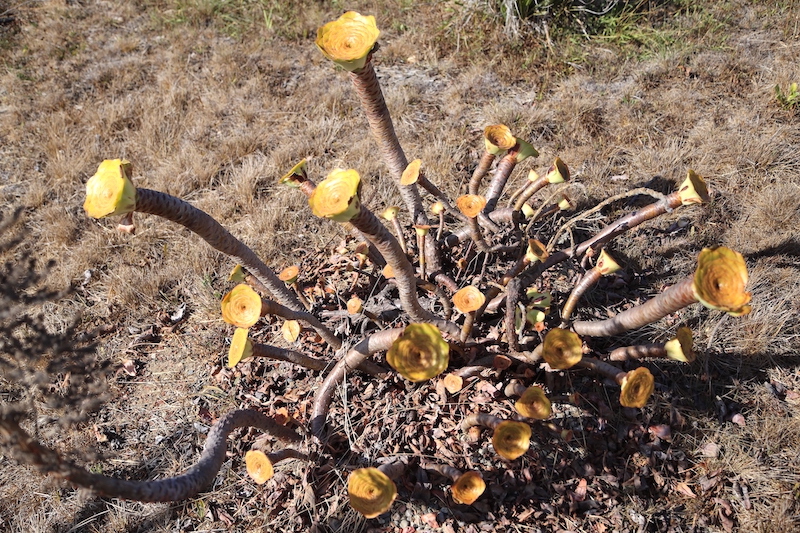
If the roots of a neglected aeonium like this one haven't dried completely, some summer watering will likely hydrate them. But please don't stress over how to tell. It's fine to let sleeping aeoniums lie.
Debra's Seasonal summary for Aeoniums
- SUMMER: July-September. Aeoniums begin going dormant as the weather warms. Those that receive no summer irrigation are completely (and clearly) dormant by late-summer heat waves.
- FALL: October-December. Aeoniums begin to awaken as days shorten, temperatures drop and rains return. Now into mid-winter is the best time to take and start cuttings.
- WINTER: December-February. Growing season; aeoniums look better and better. Roots in rain-soaked spread in preparation for fueling spring top growth. Cuttings started in fall root quickly.
- SPRING: March-June. Few succulents are so lush and lovely as rain-revived aeoniums. Spring is when they flower, so do enjoy the show. Deadhead spent blooms to keep the plants tidy.
Aeonium Uses, Photos, IDs, Varieties
Aeonium Uses, Photos and Varieties Native to the Canary Islands and Morocco, aeoniums thrive outdoors in zone 9 (and higher if in dappled shade). Prune and replant in autumn. See All Succulent Types Aeonium Agaves Aloes Cactus Crassula Echeveria Euphorbias Ice Plants Kalanchoe Portulacaria Senecio About Aeoniums Aeonium rosettes resemble big, fleshy-petalled daisies. Colors include green,…

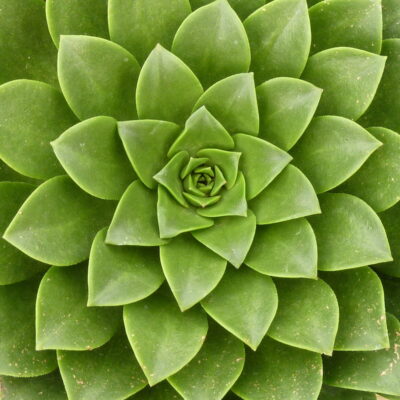
Thanks so much for this timely information. I already get your newsletter and enjoy it very much!
I love hearing that, Diane! Thank you!
I’m looking for Greenovia Mountain Rose, I saw it by chance on google and its name came up. Do you sell these plants or can you tell me where to buy them from?
I write from Italy, I apologize if my English is not perfect … thanks
No, I don’t sell plants, however I do recommend resources. For mail order, Mountain Crest Gardens. However I don’t think they ship to Italy.
Debra, do u have one or more gardeners? If not, are u in the yard 10 hours a day?!
Hi Steve — LOL, it must seem like it! For the first ten or so years I lived here, I gardened late afternoons until the street lights came on. For the second ten years, I was busy with my career and seldom spent more than several hours in the garden weekly. I had a wonderful Guatemalan gardener who came every two weeks. We’d walk the garden for half an hour and discuss what needed doing. Since he didn’t speak English, I acquired lots of new Spanish words and phrases as well as a Guatemalan accent. For the third ten years, with the garden mature and filled with low-maintenance plants that don’t grow super fast or need a lot of pruning, I now basically make a list for a gardener who comes every four weeks. To answer your question: Just one gardener, and I’m seldom hand’s-on—maybe 2 hours a week.
I have not watered my deep shade aeoniums (because of generic advice not to) during the hot NorCal summer, and they subside a very little bit. I also don’t water the ones in morning half/day sun, and they wither a lot. I was thinking of trying to keep some of them from withering by watering, but they are already starting to yellow. I have some new small ones in dappled shade this year and I am also going to keep watering them. I have rocky soil on a moderate slope, so don’t fear rot.I have several more less usual/hardy ones in pots and intend to keep them looking good with water. I have also thought that the generic advice to avoid rot by withholding summer water was suspect, so glad to read your updated ideas on the subject.
Thanks Mary Beth, good to know. Btw, some of the best aeoniums I’ve yet to see are in Northern CA, at Succulent Gardens nursery in Castroville. They absolutely love Carmel too.
I give mine minimal water in summer and they survive fine and bounce back quickly in fall.
Well there you go. Thanks Connie!
Hi Debra. We are north of Perth in Western Australia. Climate similar to yours perhaps even slightly drier. My husband waters the garden twice daily in summer early morning and late afternoon. He dosen’t specifically water any succulents but those in pots but aeoniums and others get incidental water when he does everything around them. Ours don’t have a dormant period and now beginning of June technically entering winter the yellow ones in your picture are coming up to flower in our garden. It doesn’t really get below 4c at night and that not often but day temperatures currently range through the low to middle 20Cs. I think you are right about watering them in summer. Regards Deb Robins.
Hi Deb — Thank you for an excellent perspective on the plants, from half a world away! How interesting that aeoniiums bloom in June in Australia, just like they do here, even though you’re entering winter. I would have expected them to be waking up from dormancy and not blooming until, let’s see, what’s late-spring early summer for you? December? (I just realized how difficult it must be for you to “translate” seasonal advice given by us North Americans!)
I’m much the same in Melbourne, on the east coast of Australia. If I’m watering in summer, I water everything. All of my aeoniums are in cactus mix potting mix, or my very sandy native soil, so there’s little risk of water pooling in pots. I prefer to water with the hose so that I don’t splash water on the leaves, but if I don’t have time I’ll get the sprinkler out. You should see the size of my sunburst aeoniums!
And yes, we do always have to translate northern hemisphere gardening advice! Our seasons can be quite different across Australia, depending on the climate zone – everything from Alpine to tropical. For example, the indigenous people of this region (the Wurundjeri of Narrm), recognise about six seasons here. Further north they recognise even more I think.
That’s so interesting, Ruth! I’d love to visit Australia someday and see the plants and gardens. Thanks for sharing your info and insights!
Thank you, very helpful. Always enjoy your videos too.
Elaine
Thanks, Elaine! I’m glad I can help.